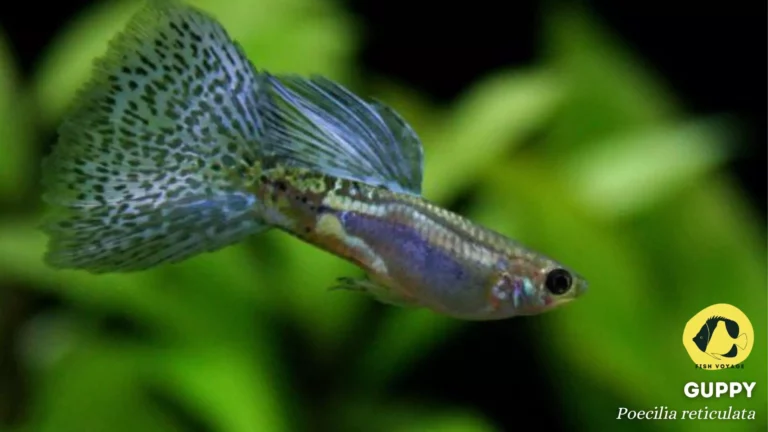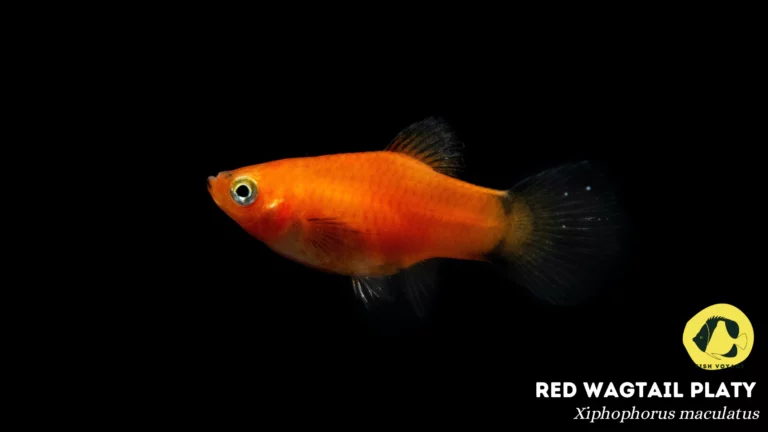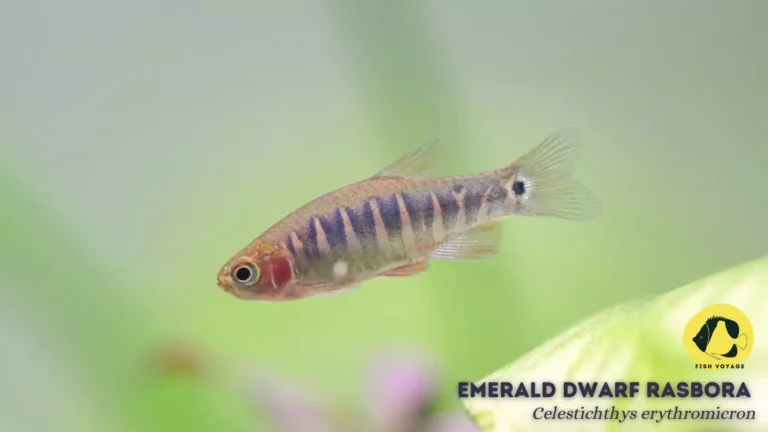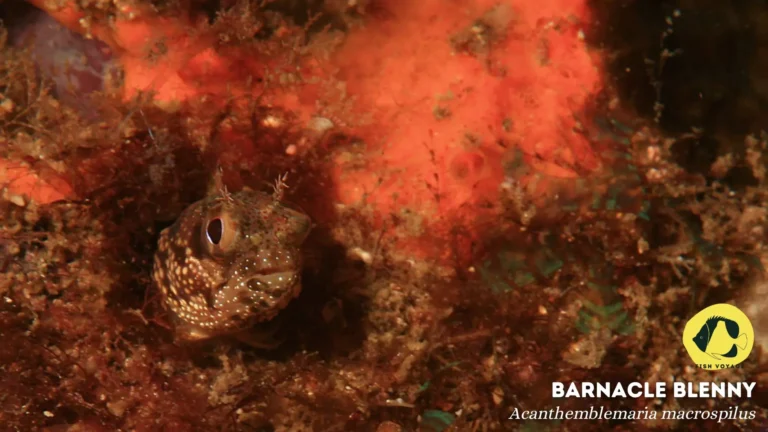The Ultimate Guide to Damselfish Tank Requirements
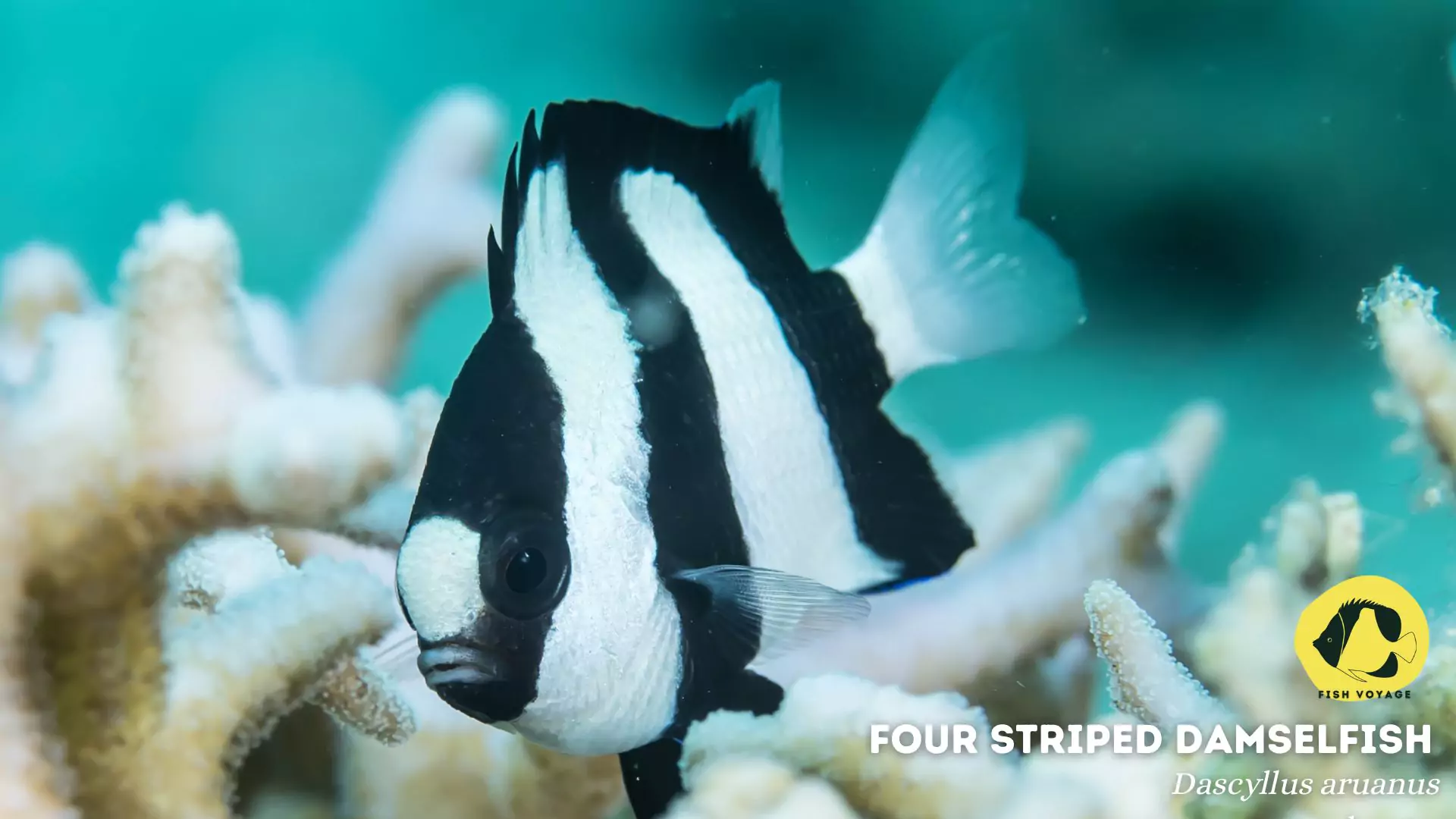
In the captivating realm of aquarium enthusiasts, the allure of damselfish has risen to prominence, making them a sought-after addition to home aquariums worldwide. Ensuring a suitable environment for these vibrant marine species is paramount to their well-being and vitality. As aquarists delve into the intricate world of damselfish care, it becomes evident that providing an optimal habitat is key to unlocking their full splendor.
The popularity of damselfish is not only attributed to their striking colors and unique behaviors but also to the diverse array of species available, offering enthusiasts a rich tapestry of options to adorn their aquatic sanctuaries. Join us as we explore the essential tank requirements that will pave the way for a harmonious and thriving damselfish habitat, creating a haven where these captivating creatures can flourish.
Choosing the Right Tank
Tank Size Matters
Choosing the right tank size is a foundational step in creating a thriving damselfish habitat. The significance of selecting an appropriate tank size cannot be overstated, as it directly influences the well-being and behavior of these captivating marine creatures. Damselfish, ranging in species and sizes, exhibit unique space requirements. Opting for a spacious environment allows them to express their natural behaviors, reduces stress, and promotes overall health. For smaller species, like the popular Blue Devil Damselfish, a tank of at least 30 gallons is recommended, while larger species, such as the Yellowtail Damselfish, may require larger tanks exceeding 50 gallons. Understanding the specific spatial needs of your chosen damselfish species is crucial for fostering a harmonious aquatic environment.
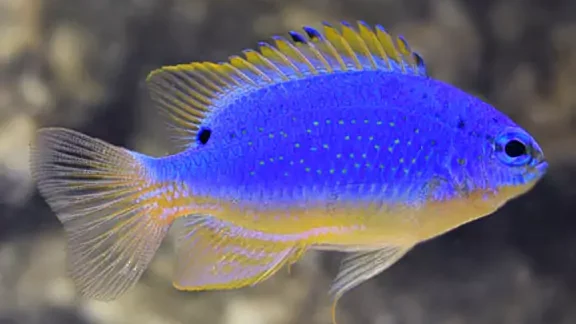
Tank Shape and Design
The shape and design of the tank play a pivotal role in the well-being of damselfish. These marine jewels thrive in tanks that mimic their natural habitat, often preferring longer tanks that allow for ample swimming space. Incorporating structures that emulate coral reefs and rocky formations is essential, providing hiding spots and territories for damselfish to claim as their own. The strategic placement of live rocks not only adds aesthetic appeal but also serves practical purposes, promoting territorial boundaries and encouraging the exploration of their surroundings. A well-structured environment with carefully chosen tank shapes and design elements ensures that damselfish can showcase their vibrant colors and dynamic behaviors in a secure and aesthetically pleasing setting.
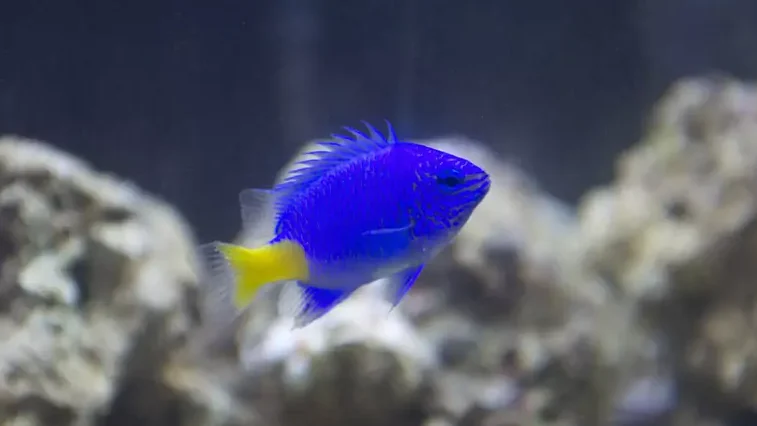
Water Quality and Parameters
Optimal Water Temperature
Maintaining the ideal water temperature is a key factor in the care of damselfish, ensuring their health and vibrant behavior. Damselfish thrive in tropical waters, and maintaining a temperature range of 74-82°F (23-28°C) replicates their natural habitat. Consistency in temperature is crucial, as fluctuations can stress the fish and compromise their immune system. Within this optimal range, damselfish exhibit their full spectrum of colors, engage in natural behaviors, and flourish in a stable and comfortable aquatic environment.
Salinity Levels
Proper salinity is paramount in sustaining a healthy damselfish habitat. These marine species, adapted to life in saltwater environments, necessitate a salinity level of 1.020 to 1.02Regular monitoring using a hydrometer or refractometer is advised, allowing aquarists to make informed adjustments. Maintaining the correct salinity not only supports the osmoregulation of damselfish but also influences their metabolic functions, immunity, and overall well-being. By diligently managing salinity levels, aquarists create an oceanic haven within their tanks, fostering an environment where damselfish can thrive.
pH and Water Hardness
The preferred pH range for damselfish is typically between 8.1 and 8.4, reflecting the alkaline nature of their natural habitats. A stable pH level is essential for their metabolic processes and overall physiological balance. Additionally, ensuring suitable water hardness, ideally between 8 to 12 dKH, contributes to the health of damselfish by supporting proper growth and shell development. Monitoring and adjusting these parameters regularly are fundamental practices that humanize the care of these marine companions, enabling aquarists to sculpt an aquatic symphony that resonates with the well-being of their damselfish residents.
Filtration and Circulation
Effective Filtration Systems
For damselfish tanks, employing suitable filtration systems is paramount to maintaining pristine water conditions. Aquarists can opt for a combination of mechanical and biological filtration methods. Mechanical filtration, typically facilitated by sponge filters or filter pads, efficiently removes debris, uneaten food, and waste particles, ensuring the water remains visually clear. Complementing this, biological filtration, often achieved through live rocks and beneficial bacteria colonies, plays a crucial role in breaking down harmful ammonia and nitrite compounds. A well-balanced filtration system not only enhances water quality but also contributes to the overall health and longevity of damselfish residents.
Strategic Water Circulation
Understanding the significance of water circulation is fundamental to creating a healthy and dynamic environment for damselfish. Proper water movement mimics the natural flow of ocean currents, promoting oxygenation and nutrient distribution throughout the tank. To achieve optimal water circulation, consider employing powerheads or wavemakers strategically placed within the aquarium. These devices simulate the ebb and flow of tides, preventing dead spots and ensuring a well-oxygenated environment. By orchestrating this aquatic ballet, aquarists not only enhance the visual appeal of their tanks but also foster an environment where damselfish can showcase their natural behaviors and thrive in the gentle currents.
Tank Decoration and Substrate
Natural Habitat Simulation
To ensure the well-being and contentment of damselfish, recreating their natural habitat within the aquarium is instrumental. Consider incorporating live rocks, which not only serve as aesthetic elements but also provide hiding spots and territories for damselfish to establish their presence. The addition of corals, both soft and hard varieties, mimics the vibrant and diverse marine ecosystems the damselfish thrive in. Live plants, such as sea grasses or macroalgae, contribute to the aesthetics while offering additional hiding places and enhancing water quality. This carefully curated seascape not only creates a visually appealing aquarium but also fosters an environment where damselfish can engage in natural behaviors, establishing their territory and seeking refuge among the intricacies of their seaside sanctuary.
Substrate Selection
Choosing the right substrate is a critical aspect of damselfish tank care, influencing both water quality and the overall stability of the aquatic environment. Opt for substrates such as aragonite sand or crushed coral, which not only contribute to the aesthetic appeal but also assist in maintaining stable pH levels by acting as a buffer. This substrate type encourages the growth of beneficial bacteria, supporting biological filtration processes that break down harmful compounds. The right substrate not only anchors decorations and structures within the tank but also provides a suitable medium for damselfish to engage in natural behaviors, such as digging or sifting through the substrate for food. By selecting an appropriate substrate, aquarists lay the foundation for a balanced and harmonious aquatic habitat, promoting the health and vitality of damselfish residents.
Compatible Tank mates and Social Dynamics
- Clownfish (Amphiprion spp.): Known for their vibrant colors and peaceful nature, clownfish make excellent tankmates for damselfish. Their unique symbiotic relationship and distinct swimming patterns create a visually appealing and harmonious underwater landscape.
- Gobies (Gobiidae family): With their small size and non-aggressive behavior, gobies are ideal companions for damselfish. They often occupy different areas of the tank, reducing the likelihood of territorial disputes and promoting a diverse aquatic community.
- Firefish (Nemateleotris spp.): Firefish, characterized by their striking dorsal fins, coexist peacefully with damselfish. Their calm demeanor and tendency to inhabit the upper levels of the tank complement the lower-dwelling damselfish, fostering a balanced environment.
- Chromis (Chromis spp.): Related to damselfish, chromis share similar social structures, making them compatible tank mates. Their schooling behavior adds dynamic movement to the tank, and their schooling nature reduces the focus on individual territories.
- Cardinalfish (Apogonidae family): Cardinalfish, known for their nocturnal habits, offer an intriguing contrast to damselfish. Their peaceful nature and preference for different activity times contribute to a well-balanced and visually captivating aquarium.
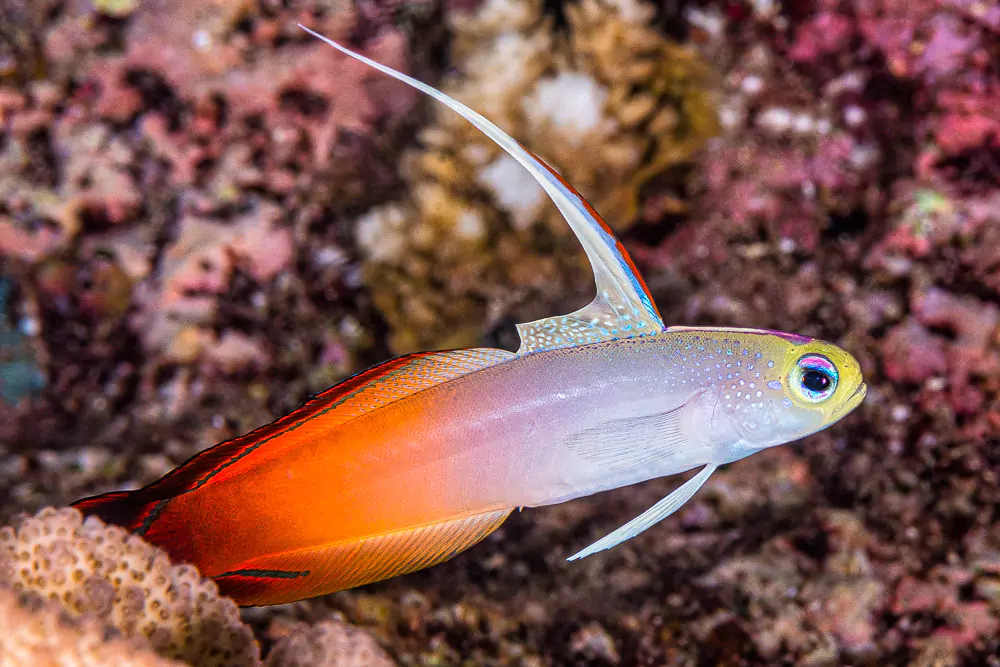
Compatibility Issues and Solutions
- Territorial Disputes: Introduce tankmates simultaneously to establish territories together.
- Aggressive Behavior: Provide ample hiding spots and rearrange tank decor to reduce aggression.
- Monitor Interactions: Regularly observe tank dynamics and address any signs of stress or conflict promptly.
Understanding Damselfish Behavior
- Territorial Instincts: Damselfish exhibit territorial behavior. Create hiding spots and ensure ample space to reduce territorial disputes.
- Hierarchy and Aggression: Establishing a hierarchy is natural, but excessive aggression can occur. Introduce damselfish in groups to distribute aggression, and monitor for signs of stress.
- Social Structure: Damselfish thrive in structured social environments. Strategically placing decor and providing territories fosters a sense of security.
- Monitoring Color Changes: Changes in coloration can indicate stress or aggression. Regularly observe damselfish to address any behavioral shifts promptly.
Managing Aggression and Territorial Behaviors
- Rearrange Tank Decor: Redefine territories by rearranging decor periodically.
- Group Introductions: Introduce damselfish in groups to distribute aggression and reduce stress.
- Provide Hiding Spots: Ample hiding spots offer refuge during territorial disputes, promoting a more relaxed environment.
By considering these insights and implementing strategic measures, aquarists can cultivate a dynamic and thriving aquatic community with damselfish at its heart.
Conclusion
In conclusion, creating a thriving environment for your damselfish aquarium involves careful consideration of key factors. Selecting an appropriately sized tank, understanding and maintaining optimal water conditions, implementing effective filtration and circulation systems, and thoughtfully crafting the tank’s decor are paramount to the well-being of your damselfish. By mimicking their natural habitat, choosing compatible tank mates, and managing their social dynamics, you pave the way for a harmonious aquatic community. It’s not just about providing a visually appealing tank but about creating a sanctuary where damselfish can express their vibrant colors and behaviors. As you embark on this aquatic journey, we encourage you to implement these tank requirements diligently, fostering an environment that not only enhances the aesthetic allure of your aquarium but also ensures the health, happiness, and longevity of your damselfish residents. Here’s to a flourishing underwater world that reflects the beauty of nature within the confines of your own home.
Additional Resources
Reputable Forums
To further enhance your journey in damselfish care, we recommend exploring reputable forums where experienced aquarists share valuable insights and expertise. Connect with like-minded enthusiasts, seek advice, and participate in discussions at forums such as AquariumAdvice or Reef2Reef. These platforms serve as invaluable knowledge hubs for navigating the intricacies of damselfish care.
Recommended Products
- Filtration Systems: Explore efficient filtration solutions such as the Fluval External Canister Filter for mechanical and biological filtration.
- Water Testing Kits: Ensure accurate monitoring of water parameters with reliable testing kits like the API Saltwater Master Test Kit for pH, ammonia, nitrite, and nitrate levels.
- Tank Decor: Craft a natural habitat with high-quality live rocks, corals, and plants available at brands like Ameliade.
- Substrate Options: Choose suitable substrates like CaribSea Arag-Alive to maintain stable pH levels and support biological filtration.
- Water Circulation: Achieve optimal water movement with equipment such as Hydor Koralia Powerhead to simulate natural currents.
These resources and products serve as valuable tools in your pursuit of a thriving damselfish aquarium. Remember to leverage the expertise of the community and invest in quality products to create an environment that not only meets but exceeds the needs of your aquatic companions. Happy fishkeeping!
Frequently Asked Questions (FAQs)
1. What is the ideal tank size for damselfish?
The ideal tank size for damselfish depends on the specific species. Generally, smaller species like the Blue Devil Damselfish thrive in tanks of at least 30 gallons, while larger species like the Yellowtail Damselfish may require tanks exceeding 50 gallons to accommodate their size and territorial behavior effectively.
2. How can I maintain optimal water temperature for damselfish?
Damselfish prefer a tropical environment with a temperature range of 74-82°F (23-28°C). Use a reliable aquarium heater and monitor temperatures regularly to ensure a stable and comfortable setting for your damselfish.
3. What types of filtration systems are suitable for damselfish tanks?
Damselfish benefit from a combination of mechanical and biological filtration. Consider using sponge filters or filter pads for mechanical filtration and incorporate live rocks or beneficial bacteria colonies for effective biological filtration, promoting water clarity and overall health.
4. Can damselfish live with other tankmates?
Yes, damselfish can coexist with compatible tankmates. Select peaceful species like clownfish, gobies, or certain blennies, and introduce them simultaneously to prevent territorial disputes. Regular monitoring and providing hiding spots can contribute to a harmonious aquatic community.
5. How do I manage damselfish aggression and territorial behavior?
To address aggression and territorial behavior, provide ample hiding spots and rearrange tank decor to redefine territories if issues arise. Introducing damselfish in groups can distribute aggression, and monitoring social cues, such as changes in coloration, helps identify and mitigate potential conflicts.


